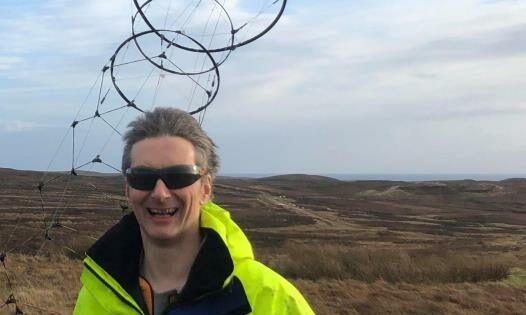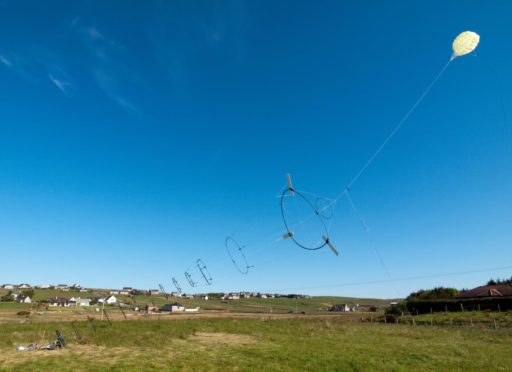The strong wind speeds of Shetland are being used by an inventor to develop innovative technology to generate electricity using kites.
Rod Read hopes to build on more than a decade of research and development to create a portable system capable of producing 10kilowatts (kW).
Mr Read, who recently moved to Shetland from the Outer Hebrides, has already produced prototypes, including one that generates 1.5kW.
And he has secured £40,000 backing from Highlands and Islands Enterprise (HIE) for the £190,000 first phase of the project.
Concept is gathering global interest
Mr Read’s Windswept and Interesting company is one of only around 40 in the world dedicated to kite energy.
Although a relatively new concept, it is gathering global interest as a scalable carbon-neutral power option of the future.
The system being developed in Shetland uses wind to lift it high in the air and connects the hoops of a rotary kite to a ground-based generator.
It is compact enough to fit in a small electric vehicle and can also be used to charge it.
Mr Read, who has been working with academic partners including Strathclyde University, believes a portable low-cost kite wind turbine could appeal to crofters, eco travellers and farm workers.
He said: “The whole idea with kite power is about making lightweight and scalable systems, which can fly in stronger winds at higher altitudes.
“The operational capacity of kite turbines to scale is not yet known, which is the biggest research and development challenge faced in bringing the product to market and this is what this project aims to address.
“Shetland offers a fantastic opportunity to prove durability and reliability in higher wind speeds.
“We are really pleased with the funding we have received from HIE to support our project.”
The company was also successful in securing Shell Gamechanger initiative funding and has been given support by Shetland Islands Council.
The mechanisms behind kite turbines are new and the system is an emerging technology, which could make the Highlands and Islands a leader in this new field of technology.”
John MacKenzie, HIE
Mr Read is developing plans to use part of Scatsta Airport, which closed flights in 2019, to test the technology.
Two jobs are expected to be created by the project over the next three years.
John MacKenzie, senior development manager at HIE, said: “This is a really exciting project and one that could potentially benefit remote communities and create more jobs in our region.
“The innovative energy system is low-cost and uses less carbon than other renewable energy options.
“The mechanisms behind kite turbines are new and the system is an emerging technology, which could make the Highlands and Islands a leader in this new field of technology.

